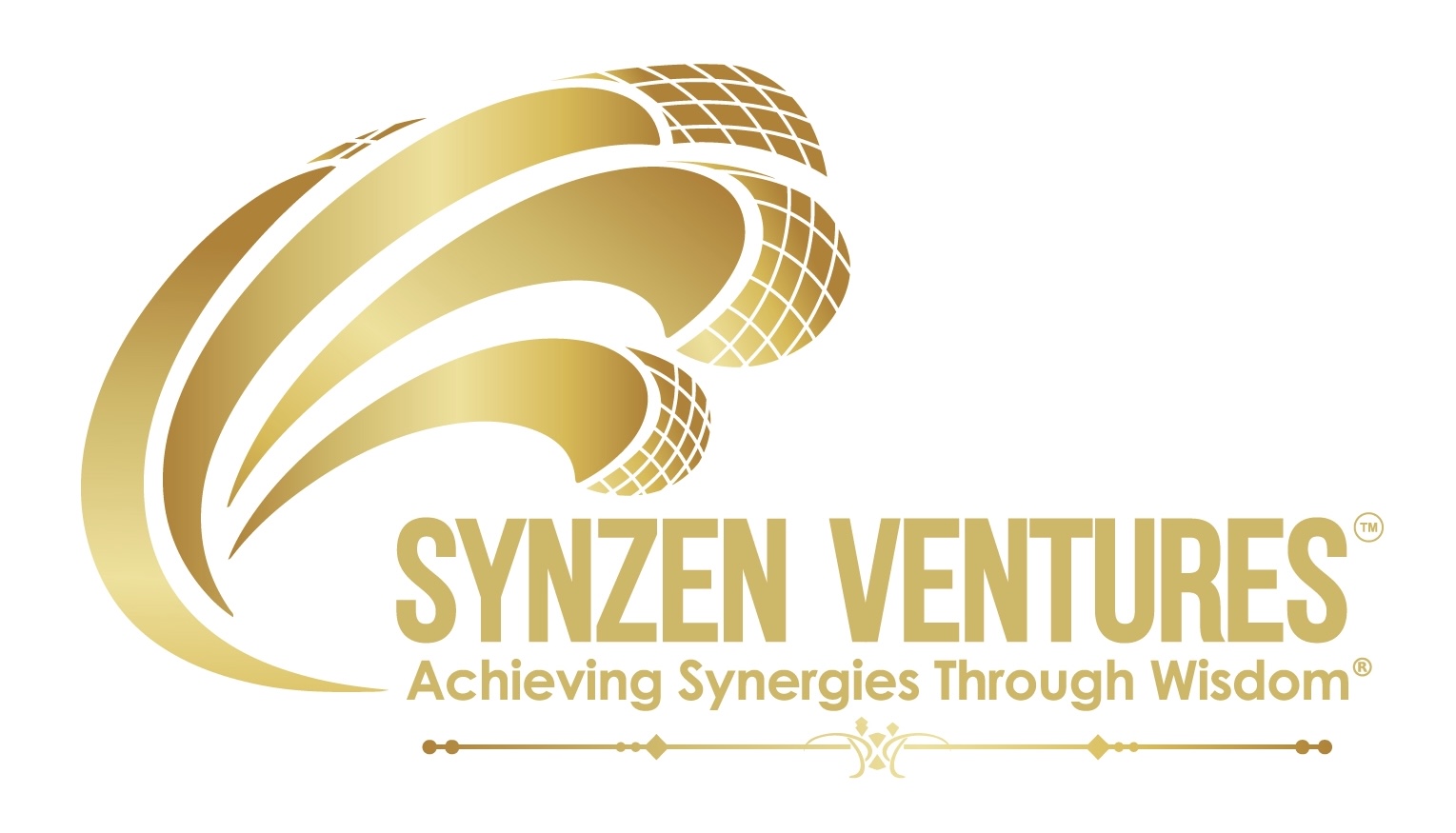Understanding Behaviors in Organizations: The Ultimate Guide to Leadership

Understanding Behaviors in Organizations: The Ultimate Guide to Leadership
Introduction
Understanding behaviors in organizations is crucial for leaders aiming to drive success and enhance executive performance. Recognizing the patterns and nuances of employee behavior can significantly impact organizational performance, making it an essential focus for effective leadership.
Why Understanding Behaviors in Organizations Matters
Grasping these behaviors aids in managing teams more effectively, improving productivity, and fostering a positive work environment. Leaders equipped with this knowledge can better align their initiatives with the organization's goals.
The Connection Between Leadership and Executive Performance
Leadership directly influences executive performance by setting the tone for organizational culture and shaping employee behavior. Effective leaders understand how their actions affect team dynamics, leading to improved decision-making and strategic alignment.
What This Guide Offers
This guide aims to provide insights into the various factors influencing organizational behaviors, explore different leadership styles, and offer practical strategies to enhance leadership effectiveness. It serves as a comprehensive resource for leaders seeking to understand and improve their influence on organizational behavior.
By delving into these elements, leaders can cultivate environments that not only support individual growth but also drive collective success within their organizations. To achieve this, it's essential for leaders to continually elevate their leadership skills, ensuring they are well-equipped to navigate the complexities of organizational behavior and lead their teams towards success.
What Are Organizational Behaviors?
Understanding organizational behaviors is crucial for effective leadership and management. At its core, organizational behavior refers to the study of how individuals and groups act within an organization. This includes a wide range of actions and attitudes that affect workplace interactions, such as decision-making, communication, teamwork, and conflict resolution.
Examples of Behaviors Observed in Organizations:
- Communication Patterns: How information flows within a team, including verbal and non-verbal interactions.
- Decision-Making Processes: The methods by which decisions are made, whether collaboratively or hierarchically.
- Teamwork Dynamics: The way teams collaborate, share responsibilities, and reach goals together.
- Conflict Resolution: Approaches for managing disagreements and fostering a positive work environment.
Studying these behaviors provides valuable insights into the inner workings of an organization. By analyzing these patterns, leaders can identify areas for improvement, enhance employee engagement, and drive performance. For instance, recognizing ineffective communication can lead to targeted interventions that promote clearer dialogue, while understanding group dynamics can help in forming high-performing teams.
The importance of studying organizational behaviors extends to its impact on management practices. When leaders are equipped with knowledge about behavioral tendencies within their teams, they can tailor their strategies to align with desired outcomes. This not only aids in achieving organizational objectives but also fosters a workplace culture where employees feel valued and motivated.
By delving into the nuances of organizational behavior, leaders can create environments that not only support but also enhance productivity, innovation, and employee satisfaction.
Key Factors Influencing Behaviors in Organizations
Organizational Culture and Its Role in Shaping Employee Behavior
Definition and Importance of Organizational Culture
Organizational culture refers to the shared values, beliefs, and norms that shape how individuals within an organization interact with one another and with external stakeholders. It creates the environment in which employees work, affecting decision-making processes and communication styles. A strong culture aligns with the organization's mission and vision, guiding employee behavior.
Professor Edgar Schein, a leading expert in organizational development, emphasizes that culture goes beyond superficial elements like dress codes or office layouts. It is deeply rooted in the assumptions and values held by members of the organization. To understand behaviors in organizations, we must recognize how these cultural elements influence interactions and performance.
For those interested in delving deeper into this topic, resources such as this podcast on organizational culture transformation featuring insights from Harvard Executive Fellow Ann Le Cam can provide valuable perspectives.
How Culture Shapes Employee Behavior and Performance
The culture of an organization sets expectations for behavior, influencing how employees approach their work and interact with colleagues. For example:
- Shared Values: When employees share common values, such as integrity or innovation, it fosters a sense of unity and purpose. This alignment can lead to higher levels of motivation and productivity.
- Beliefs and Norms: Normative beliefs about what constitutes acceptable behavior guide employee actions. Cultures that promote collaboration over competition often see enhanced teamwork and reduced conflicts.
- Employee Motivation: A positive culture enhances motivation by providing employees with a sense of belonging and recognition. Conversely, toxic cultures can lead to disengagement and high turnover rates.
The tech industry exemplifies this dynamic, where companies like Google are renowned for their innovative cultures that prioritize creativity and experimentation. This cultural framework empowers employees to take risks without fear of failure, driving groundbreaking advancements.
Role of Leaders in Cultivating a Positive Culture
Leaders play a crucial role in shaping and maintaining organizational culture. They act as cultural architects by modeling desired behaviors and reinforcing core values through their actions and decisions. To cultivate a positive culture:
- Lead by Example: Leaders should embody the organization's values in their daily conduct. If transparency is valued, leaders must communicate openly with their teams.
- Recognize and Reward Alignment: Acknowledging employees who demonstrate behaviors aligned with cultural values reinforces those behaviors across the organization.
- Engage in Open Dialogue: Encouraging feedback from all levels allows leaders to understand cultural perceptions and make necessary adjustments.
Case Study: Southwest Airlines
Southwest Airlines offers a compelling example of leadership-driven culture development. Known for its "Warrior Spirit," "Servant's Heart," and "Fun-LUVing Attitude," Southwest's leadership consistently prioritizes these cultural tenets. Through initiatives like employee appreciation events and community service programs, they reinforce a culture that places people first—resulting in high employee satisfaction and customer loyalty.
By understanding these key factors influencing organizational behavior—particularly the profound impact of culture—leaders can strategically guide their teams toward improved performance and engagement. The relationship between leadership effectiveness and executive performance hinges on this deep understanding of organizational dynamics.
Understanding Different Leadership Styles and Their Effects on Employee Behavior
Leadership styles play a crucial role in shaping employee behavior and performance within an organization. Recognizing the impact of individual differences, personality traits, and values is essential for leaders aiming to create a positive work environment.
Overview of Leadership Styles:
- Transformational Leadership: This style focuses on inspiring and motivating employees to achieve their full potential by fostering a shared vision and cultivating an atmosphere of trust and innovation. Leaders who embrace transformational leadership often prioritize employee motivation and development, leading to high levels of engagement and productivity.
- Servant Leadership: Emphasizing the leader's role as a servant first, this approach centers on supporting and empowering employees. Servant leaders prioritize the needs of their team members, promoting a culture of shared values, beliefs, and norms that encourage collaboration and mutual respect.
Selecting an Appropriate Leadership Style:
Choosing the right leadership style depends on several factors, including organizational culture, individual differences among team members, and specific situational requirements. Leaders can enhance workplace behavior by:
- Recognizing Individual Strengths: Understanding individual differences allows leaders to tailor their approach to meet the unique needs of each employee, leveraging personality traits and values to boost motivation.
- Adapting to Situations: Effective leaders assess the context of each situation—considering factors such as task complexity, team dynamics, and organizational challenges—and adapt their leadership style accordingly.
By strategically selecting leadership styles aligned with organizational goals and employee characteristics, leaders can significantly influence workplace behavior, driving both individual and collective success.
For those interested in delving deeper into the nuances of leadership, resources like leadership coaching can provide valuable insights. Additionally, exploring women in leadership could shed light on the unique challenges and opportunities faced by female leaders today. The podcast series from CPO Playbook also offers a wealth of information on best leadership skills for 2023 which includes expert insights on leadership diversity and cultural transformation.
The Impact of Group Dynamics on Organizational Performance
In the field of organizational behavior, understanding group dynamics is essential for improving performance and reaching strategic goals. Group dynamics refer to the interactions and influences among group members that affect how the group functions and performs. When a group works well together, it can greatly improve the effectiveness of the organization. However, if there are problems within the group, it can hinder progress.
How Individual Differences Affect Group Behavior
Individual differences, such as personality traits, values, and motivation levels, play a crucial role in shaping how groups behave. By recognizing these differences, leaders can effectively utilize each person's strengths. For instance:
- Personality Traits: Introverts and extroverts contribute differently to teamwork; understanding these differences can help assign roles that maximize productivity.
- Values and Beliefs: Aligning team tasks with shared values fosters a sense of purpose and belonging.
Strategies for Fostering Effective Teamwork
Creating an environment that promotes effective teamwork involves several strategies:
- Promoting Open Communication: Encouraging transparency and dialogue helps build trust among team members.
- Establishing Clear Roles and Responsibilities: Clearly defined roles reduce ambiguity, promoting efficient collaboration.
- Encouraging Diversity of Thought: Valuing diverse perspectives enhances creativity and problem-solving abilities.
The importance of organizational culture in shaping group dynamics cannot be emphasized enough. A culture that prioritizes shared values, beliefs, and norms lays the groundwork for cohesive group behavior. Leaders must actively foster a positive culture by demonstrating desired behaviors, acknowledging accomplishments, and providing opportunities for continuous learning.
By comprehending the complexities of group dynamics and implementing strategies to promote effective collaboration, leaders can significantly improve their organization's performance.

Visual goal setting with a checklist and targets, representing planning, objectives, and progress tracking in the workplace.
The Power of Effective Communication in Enhancing Workplace Behavior
Effective communication is essential for any successful organization. It has a significant impact on workplace behavior and overall productivity. Understanding Behaviors In Organizations: A Guide to Leadership and Executive Performance emphasizes the crucial role that communication patterns play in shaping employee interactions and creating a positive work environment.
Role of Effective Communication in Enhancing Workplace Behavior
Communication is vital for how organizations function. It affects relationships, decision-making, and team unity. Leaders who prioritize clear and open communication often see increased employee involvement and motivation. This clarity not only minimizes misunderstandings but also builds trust and responsibility among team members.
For instance, when leaders clearly communicate their expectations and provide constructive feedback, employees are more likely to align their actions with the organization's objectives. Likewise, encouraging open discussions cultivates a culture where employees feel appreciated and heard, resulting in higher morale and collaboration. Duncan O'Rourke's insights on executive teams highlight the significance of such open communication in driving organizational success.
Techniques for Improving Communication Within Teams
Improving communication within teams requires intentional strategies that accommodate different communication styles:
- Active Listening: Encourage team members to listen attentively without interruptions. This practice ensures that all voices are heard and respected.
- Feedback Mechanisms: Implement regular feedback sessions to discuss performance openly. Constructive criticism should be balanced with recognition of achievements.
- Use of Technology: Leverage digital tools like Slack or Microsoft Teams for seamless communication, especially in remote or hybrid work settings.
- Team-Building Activities: Facilitate workshops or retreats focused on improving interpersonal skills and understanding different communication preferences.
By incorporating these techniques, leaders can transform their teams into cohesive units capable of achieving high performance and maintaining a harmonious work atmosphere. This understanding sets the stage for developing leadership skills that further drive organizational success. For a deeper dive into the effective communication strategies at work, one might explore resources that cover essential skills such as cross-cultural communication, meeting optimization, and the role of storytelling in leadership.
Developing Leadership Skills for Organizational Success
Understanding and nurturing the qualities of a good leader is crucial for achieving organizational success. Leadership qualities like emotional intelligence and adaptability are vital in building effective teams and improving performance outcomes.
Key Qualities That Define Successful Leaders
1. Emotional Intelligence (EI)
Emotional intelligence refers to the ability to perceive, control, and evaluate emotions. It's a crucial leadership quality that underpins effective communication and conflict resolution within teams.
Leaders with high EI can empathize with team members, manage stress effectively, and navigate complex interpersonal dynamics. This enhances trust and collaboration, ultimately leading to higher team morale and productivity.
2. Adaptability
Adaptability involves a leader's capacity to adjust strategies and behaviors in response to changing circumstances. In today's fast-paced business environment, this quality is indispensable.
Adaptive leaders are more likely to embrace innovation, lead through change confidently, and inspire teams to remain resilient amidst challenges.
Influence on Team Dynamics and Performance
Enhanced Collaboration
Leaders who exhibit emotional intelligence foster a collaborative atmosphere where team members feel valued and understood. This encourages open dialogue, facilitating innovative problem-solving.
Improved Performance
By leveraging adaptability, leaders can align team objectives with organizational goals more effectively. This alignment ensures that resources are utilized efficiently, contributing to improved performance metrics.
Continuous Learning: The Importance of Leadership Skills Training Programs for Emerging Leaders
Continuous learning is vital for leaders at all levels seeking sustainable development in their roles. Training programs focused on leadership skills offer structured paths for growth, equipping leaders with tools needed for success.
Importance of Continuous Learning and Development
1. Staying Relevant
As industries evolve rapidly due to technological advancements and shifting market demands, continuous learning helps leaders stay ahead by updating their knowledge base and skill set.
2. Building Resilience
Training fosters resilience by preparing leaders to handle unforeseen challenges with confidence. This proactive approach mitigates risks associated with organizational change or disruption.
Overview of Various Training Programs Available for Skill Enhancement
- Personalized Coaching: Tailored coaching sessions provide individualized guidance to address specific leadership challenges or goals. Through one-on-one interactions, coaches help leaders refine their decision-making processes and strategic thinking abilities.
- Workshops and Seminars: These interactive sessions focus on practical skills such as conflict resolution, negotiation tactics, or cultural competence—vital components of effective leadership.
- Online Courses: Flexible online platforms offer courses on diverse topics like crisis management or digital transformation strategies, allowing leaders to learn at their own pace.
- Mentorship Programs: Pairing emerging leaders with experienced mentors accelerates learning through shared experiences and insights, fostering growth in both personal and professional capacities.
Investing in leadership development not only enhances individual capabilities but also strengthens organizational foundations by cultivating future-ready leaders equipped for dynamic environments.
Challenges Faced by Leaders in Navigating Organizational Change
Understanding behaviors in organizations is crucial for effective leadership and executive performance, especially when navigating the complexities of organizational change. Today's leaders face a myriad of challenges that test their confidence and adaptability.
Factors Contributing to Declining Leadership Confidence
The landscape of modern business presents several factors that can erode leadership confidence:
- Rapid Technological Advancements: The swift pace of technological change requires leaders to continuously adapt and innovate, often without a clear roadmap.
- Economic Uncertainty: Fluctuating markets and geopolitical tensions create an unpredictable environment, leaving leaders uncertain about future strategies.
- Cultural Shifts: As organizations become more diverse and inclusive, leaders must navigate complex social dynamics and varying expectations.
- Increased Transparency: The rise of digital platforms means that actions and decisions are more visible to stakeholders, increasing scrutiny and pressure.
Strategies to Rebuild Trust and Effectiveness in Leadership
To counter these challenges, leaders can employ several strategies aimed at rebuilding trust and enhancing effectiveness:
- Authentic Communication: Open and honest dialogue fosters trust. Leaders should communicate their vision clearly while also addressing concerns transparently.
- Empathy and Emotional Intelligence: Understanding employee perspectives through active listening can strengthen relationships and build a supportive work environment.
- Adaptability Training: Providing training focused on adaptability equips leaders to handle unexpected changes with resilience.
- Empowering Teams: By decentralizing decision-making, leaders can foster a sense of ownership among employees, increasing engagement and trust.
Leading Through Change: Frameworks for Managing Workforce Transformation Strategies
Workforce transformation is inevitable in today's dynamic business world. Effective frameworks for managing this transformation are essential for maintaining morale and performance during times of rapid change.
Understanding the Impact of Rapid Change on Employee Behavior and Morale
Rapid change can significantly affect employee behavior:
- Stress and Anxiety: Uncertainty about roles or job security can lead to increased stress levels among employees.
- Resistance to Change: Employees may resist new processes or technologies due to fear of the unknown or perceived threats to their job competence.
- Decreased Productivity: Disruption in established workflows can temporarily lower productivity as teams adjust to new systems or structures.
Frameworks for Leading Through Change
Implementing robust frameworks helps navigate these challenges effectively:
- Change Management Models:
- Kotter’s 8-Step Process: Emphasizes creating urgency, building coalitions, forming strategic visions, and anchoring changes in corporate culture.
- ADKAR Model: Focuses on Awareness, Desire, Knowledge, Ability, Reinforcement as key stages for successful change implementation.
- Scenario Planning:
- Involves developing multiple scenarios based on potential future developments to prepare strategic responses accordingly.
- Continuous Feedback Loops:
- Establishing mechanisms for ongoing feedback allows leaders to make iterative improvements during transformation initiatives.
- Leadership Development Programs:
- Tailored programs focusing on enhancing skills such as strategic thinking, communication, and emotional intelligence prepare leaders for effective change management.
Addressing these challenges head-on not only rebuilds leadership confidence but also aligns workforce transformation efforts with broader organizational goals. This understanding lays the groundwork for exploring solutions that enhance leadership effectiveness across all levels within an organization.


.avif)















